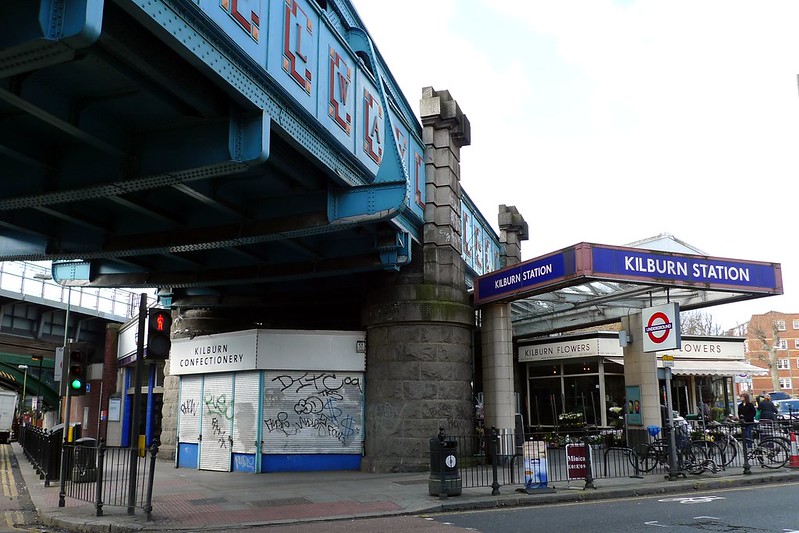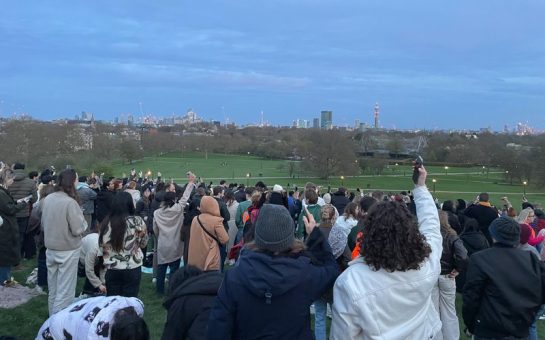Ask a north Londoner to describe Kilburn, and they’ll probably say something like: “Walk home quickly after dark”.
West Hampstead, meanwhile, gets to be Kilburn’s classier neighbor — more associated with Georgian terraced houses, clothing boutiques, and sourdough bakeries than nighttime key gripping.
But for two areas with such starkly different reputations, there’s no consensus on where Kilburn ends and West Hampstead begins.
The fuzziness is partly down to the fact that, like many historic parts of London, Kilburn is not an official administrative unit.
Neither is West Hampstead, but insofar as Kilburn straddles two boroughs, it holds the perhaps particularly awkward status of being a “community divided by an administrative boundary”, which is how it’s referred to by the Kilburn Neighbourhood Plan Forum.
Said administrative boundary is Kilburn High Road, which separates Camden to the east from Brent to the west.
Prospective buyers seem to know this when hunting around, even as they continue to express a clear preference for properties in West Hampstead.
“One of the first questions people ask is what end of the road the property is, as some streets are so long that living on one end puts you much closer — or further away from — its amenities,” said Thomas Black, the manager at a local branch of estate agent Black Katz. “It goes so street to street.”
Black added that properties just a couple of hundred metres apart can vary “quite a bit” in terms of price.
That the boundaries between Kilburn and West Hampstead are more about place identity than something objective also makes data-led comparison more difficult.
In 2017, the Kilburn Neighbourhood Plan Forum commissioned consulting firm AECOM to produce a socio-economic profile of Kilburn using 2011 Census data on Lower Super Output Layers (LSOAs).
However, the study area analyzed was only the closest available fit to the study area defined by the Forum — itself the product of a consultative process, and rejected by some locals.
Still, 2021 Census data on the 14 LSOAs included in the Forum’s map of Kilburn and the seven in West Hampstead bears out the reputational divide.
On household overcrowding, for example, the picture at first looks mixed.
But area-wide averages show a stark contrast, with 31% of households classified as “overcrowded” or “very overcrowded” in Kilburn, versus 16% in West Hampstead.
It’s a similar story with deprivation: more households on average were classified as deprived in Kilburn than West Hampstead, 25% to 18%.
And when it comes to work, a greater proportion of West Hampstead residents were employed in white-collar jobs than Kilburn residents.
For example, 18% are managers, directors or senior officials and 38% have professional occupations, above the England-wide average of 13% and 20% respectively.
Kilburn also records a higher-than-average percentage of white-collar workers, but the difference is less large.
Some of that disparity can be explained by house prices.
West Hampstead is generally still a more expensive place to purchase and rent property, so it makes sense that the area continues to be associated with higher levels of affluence.
But times are changing. Brent recorded the largest annual increase in private rental prices across any London borough in December, according to figures released by the Office for National Statistics.
The rate of inflation is down from an apparent peak of 34% in August, but still significantly higher than in Camden.
Brent borders four of the most expensive boroughs — Camden, Hammersmith & Fulham, Westminster, and Kensington & Chelsea — so is “likely absorbing some of their demand” as middle and even high-income earners get priced out of their privately rented homes, Antonia Jennings, the CEO of think tank Centre for London told North West Londoner.
“With increased demand, and from a new population who are likely earning a higher income, Brent is feeling the force of demand outstripping supply, causing this spike in private rents,” she said.
"Kilburn now is quite expensive to buy property in and it will just continue to go up as other places get more expensive and people move into the area," Black added.
And reputations can change quickly as the demography and character of a place shifts: it wasn't long ago that Camden — now a relatively fashionable place to live — was hailed as one of the most dangerous parts of the capital, Jennings explained.
For now, there continues to be a clear divide between Kilburn and West Hampstead - even if it's not 100% clear where the boundary lies.
Featured image credit: Ewan Munro via Flickr





Join the discussion